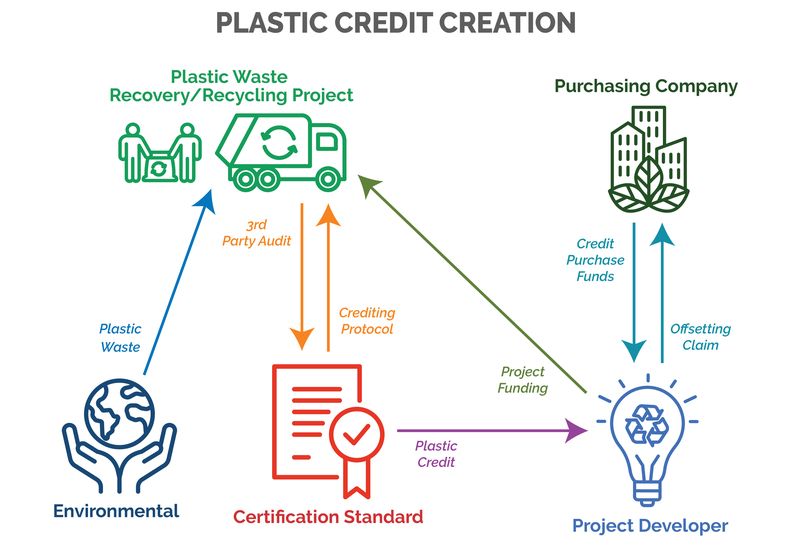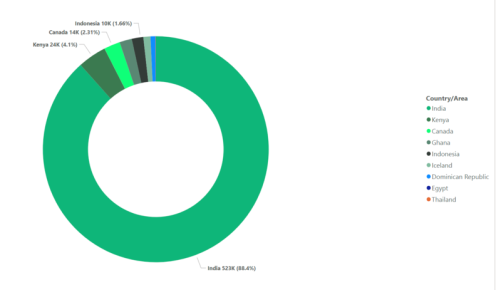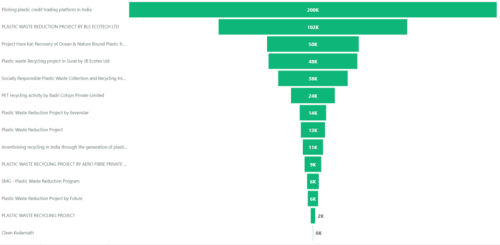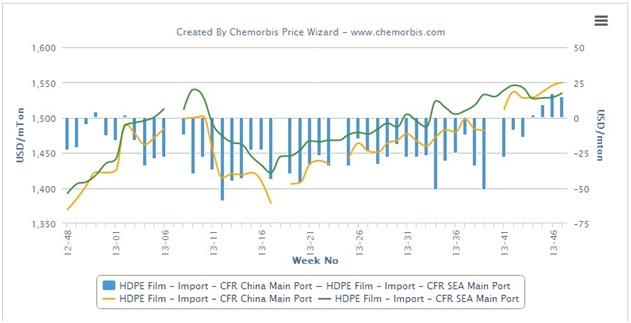Verra is a non-profit organisation that operates the Plastic Waste Reduction Program (Plastic Program) which is used for consistent accounting and crediting of a variety of plastic collection and recycling activities. Verra issues Waste Recycling or Collection Credits based on the volume of plastic waste recycled or collected above what would have happened in the absence of the Plastic Program project. Its registry stores data on all registered projects and tracks the generation, retirement, and cancellation of all Plastic Credits.
A glance at Figure 1 reveals the dominance of India in the plastic credit landscape. With a staggering 523K credits, accounting for 88.4% of the total, India takes the lead. Following closely behind is Kenya at 4.1% and Canada at 2.31%. Indonesia secures the fourth position with 1.66% of the plastic credits in the pipeline.











